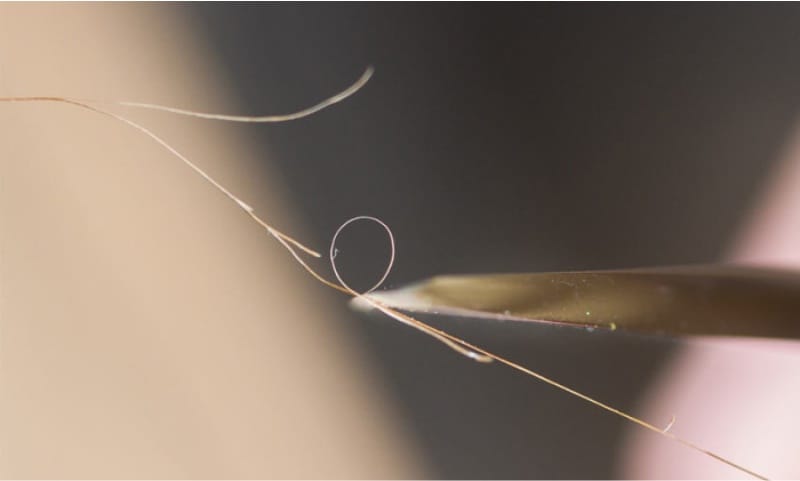It is simply impossible to describe all the nuances of how to sharpen knives correctly in one article, but this is not always necessary. Especially if an ordinary kitchen knife needs sharpening or you are just a beginner who needs to start somewhere.
- In fact, at home to sharpen a kitchen knife to the sharpness can be easily and quickly. But the difficulty is that it needs to be done so that the sharpness of the blade is preserved for a long time, and at the same time too much steel has not been removed from the blade.
In this article we will try to simply and clearly tell you how to sharpen the knife correctly with a bar. After all, this method is not only basic and accessible to everyone, but also the most effective. In addition to step-by-step instructions for sharpening and fine-tuning, here you will find a selection of training videos and an overview of alternative methods - from grinding systems to the bottom of a ceramic plate.
A little bit about choosing stones
Grinding bars are of the following types:
- Ceramic;
- Diamond;
- Natural;
- Japanese water stones.
If you wish, as soon as you gain experience, you can buy several solid and expensive diamond stones or Japanese water stones. However, it is better to start with ordinary ceramic bars (such as “boats”), which are sold in every household goods store. They are durable, durable and affordable. Among the shortcomings can be called only their uneven abrasion.

Here are tips to help you find the right assistant:
- What size should the bar be? Ideally, it is 1.5–2 times as long, or at least no shorter than a knife blade. The width and shape of the bar is not critical.
- When buying a bar, make sure that it is flat and has no chips.
- For starters, you can buy a single medium-hard grinder. But if there is a desire, buy one bar with two sides of different grain or two stones with a greater and less than two times the grain. In the future, a couple more stones can replenish your collection.
- It is best to try to get a couple of Soviet-made chops, say, at flea markets or from your grandfather. Bars marked “Made in the USSR” have one-dimensional grains and high-quality bonding material.
To bring the knife to razor sharpness, in addition to grinding stones, you can buy GOI abrasive paste, about which we will also work with.
7-step instruction for sharpening and finishing kitchen knife
So, in sharpening a knife, one goal is to scrub so much metal from the blade that the cutting edge becomes sharp again. It is necessary to begin work with a coarse-grained abrasive and to finish fine-grained.
It is important to remember the following principles of knife sharpening:
- The most important thing is to choose the optimal sharpening angle and hold it on the entire cutting edge while sliding along the bar.
- Movement should be smooth, without pressure.
- All bars need to be wetted with water, and preferably with a soap solution: before sharpening (so that the blade slides better and metal dust does not clog the pores), in the process (to remove the suspension that appears) and finally to clean the bar.
And one more important advice - the first time it is better to practice on a knife, which is not a pity to spoil. Especially if your main knife is too good and expensive. Well, let's get down to practice.
Step 1. We rinse the stone with water, and then draw it over it, say, with a sponge with a drop of dishwashing liquid.

Step 2. Next, sit down at the table and set the stone on a wooden board, for example, a cutting board. You can put a stone and a towel. Someone more convenient to put the bar perpendicular to itself, and someone at an angle of about 45 degrees. Over time, you will understand how it is more convenient for you to work.
Step 3. Now you need to determine the angle of sharpening and fix the position of the knife. What should be the angle? The general principle is - the smaller it is, the sharper the blade is, and the bigger it is - the longer the blade remains sharp.
- Ordinary kitchen knives are sharpened at an angle of 40-45 degrees. If you sharpen fillet knife (designed for cutting thin pieces of fish, poultry and meat), then it should be sharpened more sharply - at an angle of 30-40 degrees. The selected value should be divided by 2, and then we get the angle that should be between the blade and the surface of the bar. That is, for sharpening the blade at 45 degrees you need to sharpen each side of it under 22.5 degrees to the grinding surface.
To fix the knife at an angle of 22.5 degrees will help you a simple technique, as shown in the photo below.

- Remember, you should try to stick to the chosen angle during the whole work.
Step 4. Put the knife across the bar so that the upper edge of the handle is above the lower edge of the stone. Holding the hilt with one hand and the blade with the other, we begin to slide along the bar along the path shown in the picture below.

Watch a short and visual video:
- The point is that the cutting edge, which slides over the stone, is always perpendicular to the direction of movement.
- At the bend of the blade, the handle of the knife should be slightly raised to maintain the selected angle.
- Remember also that you can not press on the blade, but you should not give any slack.
Thus, it is necessary to hold the blade on the stone about 40-50 times, namely before the appearance of a “burr” (burr, micropils) along the entire length of the RK (cutting edge). Its appearance will tell you that the excess metal has worn out and there is no point in grinding. Then you need to turn the blade and repeat the same steps. Visually on the video:
- A burr is a slight roughness that is difficult to see, but you can feel for it by gently running your finger along the edge of the blade (but not along the edge, so as not to cut yourself).

Burr Sharpened Knife
During operation, a suspension will appear on the blade - metal dust, which periodically needs to be washed off with water.
Step 5. So, burrs have appeared, now proceed to fine-tuning. To do this, repeat the same manipulations on a stone with half the grain. An alternative method of debugging is with the help of musat
- Musat is a steel rod of oval or circular cross-section with longitudinal notches. It is suitable only for editing and maintaining sharpness, but not for sharpening a knife. Musatom is recommended to edit the knife every time before and after work.
How to edit a kitchen knife with musatami can be seen in the next video workshop from the respected knifemaker Gennady Prokopenkov, who, by the way, specializes in making kitchen knives.
Step 6. If you wish, you can bring your knife to razor sharpness. To do this, take any leather or leather belt, treat it with GOI abrasive paste, Dialux or any other, and then perform all the same steps, but only in the direction from the cutting edge.
Step 7. Finally, check the quality of sharpening. This is done very simply. It is enough to cut a tomato or cut paper. If you want to achieve razor sharpness, then you need to try to shave off the hair on your hand. The sharpest knives can even cut the hair, as shown in the photo below, but in the kitchen for the most ordinary knife such sharpness is not required.

Alternative sharpening methods
If your kitchen knife is a simple and inexpensive “hard worker” and / or you just don’t want to delve into the “knife culture”, we recommend using an electric sharpener, roller knife or sharpening system for sharpening at home. What are their pros and cons?
- The electric sharpener sharpens the knives perfectly and quickly, but even the highest-quality models remove too much material from the blades, thereby shortening its service life. Another disadvantage of an electric sharpener is that a good device costs over $ 200.
- Roller knife is inexpensive and easy to use. With its help, you can quickly sharpen a kitchen knife, but, unfortunately, the sharpness of the blade will remain for a while and the knife will deteriorate over time. The tool from Fiskaris (in the photo) enjoys the greatest confidence among roller knives. Do not confuse a roller knife with a V-shaped. The latter is an option for the most non-thrifty.

- Sharpening systems are good because they allow you to more accurately set and maintain the angle. Such sharpeners can be different - with fixing the blade (DMT and Lanski manufacturers) and fixing the stones themselves at a certain angle (Spyderco Triangle Sharpmaker). Separately, you can select a sharpening system in which you can select the desired angle and control the position of the knife - this is the Edge Pro Apex Knife Sharpening System. Each system has its advantages and disadvantages. So, for example, it is inconvenient to sharpen wide chef knives on sharpeners with fixing a blade, and on a triangle from Spyderco knives rule rather than sharpen, and the angle can be selected only 30 or 40 degrees. However, for the kitchen knives, just these angles are needed, and using triangles is very simple. A detailed review and instruction on sharpeners from Spyderco can be seen in the next video.
What are the disadvantages of Apex Edge Pro? Perhaps this is only the high price - $ 245. However, for sharpening kitchen knives, you can buy a Chinese copy of this sharpener (for example, Aliexpress).
There is another tricky way to sharpen a knife at home - with the help of rough risks at the bottom of a ceramic cup or plate. The principle of operation is the same - preserving the angle, smooth movements, keeping the RC (cutting edge) perpendicular to the direction.
- Guide to the choice of a universal knife and "kitchen trio"
- Guide to choosing a good universal pan
- Choosing dishes for glass-ceramic plates (standard and induction)
- The choice of pans for universal use: a comparison of 7 types, 6 tips and 1 video
- How to clean the pan outside and inside - 8 simple ways for difficult cases
- A guide to choosing a dryer for dishes



 (Rate the material! Already voted:102 average rating: 4,57 from 5)
(Rate the material! Already voted:102 average rating: 4,57 from 5)
Thanks for the article and the attached videos, all at once it became clear.
In the figure, the direction of sharpening is one, in the video - the opposite. Correct.
And the truth is confusing
All the same, I prefer to use my little electric sititek knob: quickly, simply and efficiently. You will spend money on it once, but in the kitchen a permanent assistant is always there.
There is an opinion that it is necessary to turn the knife the other side each time so as not to displace the cutting edge.